Manufacture of a Polyaniline Nanofiber Ammonia Sensor Integrated with a Readout Circuit Using the CMOS-MEMS Technique
Abstract
:1. Introduction
2. Structure of the Integrated Ammonia Sensor
3. Fabrication of the Integrated Ammonia Sensor
4. Results and Discussion
5. Conclusions
Acknowledgments
References
- Timmer, B.; Olthuis, W.; Van Den Berg, A. Ammonia sensors and their application-A review. Sens. Actuat. B 2005, 107, 666–677. [Google Scholar]
- Christie, S.; Scorsone, E.; Persaud, K.; Kvasnik, F. Remote detection of gaseous ammonia using the near infarad transmission peroperties of polyaniline. Sens. Actuat. B 2003, 90, 163–169. [Google Scholar]
- Boeker, P.; Horner, G.; Roesier, S. Monoliththic sensor array based on a quartz microbalance transducer with enhanced sensitivity for monitoring agricultural emissions. Sens. Actuat. B 2000, 70, 37–42. [Google Scholar]
- Moos, R.; Muller, R.; Plog, C.; Knezevic, A.; Leye, H.; Irion, E.; Braun, T.; Marquardt, K.J.; Binder, K. Selective ammonia exhaust gas sensor for automotive application. Sens. Actuat. B 2002, 83, 181–189. [Google Scholar]
- Pushkarsky, M.B.; Webber, M.E.; Baghdassarian, O.; Narasimhan, L.R.; Patel, C.K.N. Laser-based photoacoutic ammonia sensors for industrial applications. Appl. Phys. B 2002, 75, 391–396. [Google Scholar]
- Huang, J.; Kaner, R.B. Nanofiber formation in the chemical polymerization of aniline: a mechanistic study. Angew. Chem. Int. Ed. 2004, 43, 5817–5821. [Google Scholar]
- Virji, S.; Huang, J.; Kaner, R.B.; Weiller, B.H. Polyaniline nanofiber gas sensors: Examination of response mechanisms. Nano Lett. 2004, 4, 491–496. [Google Scholar]
- Lee, Y.S.; Song, K.D.; Huh, J.S.; Chung, W.Y.; Lee, D.D. Fabrication of clinical gas sensor using MEMS process. Sens. Actuat. B 2005, 108, 292–297. [Google Scholar]
- Mitzner, K.D.; Sternhagen, J.; Galipeau, D.W. Development of a micromachined hazardous gas sensor. Sens. Actuat. B 2003, 93, 92–99. [Google Scholar]
- Llobet, E.; Molas, G.; Molinas, P.; Calderer, J.; Vilanova, X.; Brezmes, J.; Sueriras, J.E.; Correig, X. Fabrication of Highly selective tungsten oxide ammonia sensors. J. Electrochem. Soc. 2000, 147, 776–779. [Google Scholar]
- Li, P.; Li, X. A single-side micromachined piezoresistive SiO2 cantilever sensor for ultra-sensitive detection of gaseous chemicals. J. Micromech. Microeng. 2006, 12, 2539–2546. [Google Scholar]
- Connolly, E.J.; Timmer, B.; Pham, H.T.M.; Groeneweg, J.; Sarro, P.M.; Olthuis, W.; French, P.J. A porous SiC ammonia sensor. Sens. Actuat. B 2005, 109, 44–46. [Google Scholar]
- Kim, J.W.; Takao, H.; Sawada, K.; Ishida, M. Integrated inductors for RF transmitters in CMOS/MEMS smart microsensor systems. Sensors 2007, 7, 1387–1398. [Google Scholar]
- Dai, C.L.; Chen, Y.L. Modeling and manufacturing of micromechanical RF switch with inductors. Sensors 2007, 7, 2660–2670. [Google Scholar]
- Dai, C.L.; Tai, Y.W.; Kao, P.H. Modeling and Fabrication of Micro FET Pressure Sensor with Circuits. Sensors 2007, 7, 3386–3398. [Google Scholar]
- Neamen, D.A. Semiconductor Physics and Devices; Richard D. Irwin: Homewood, IL, 1992. [Google Scholar]
- Sengupta, P.P.; Barik, S.; Adhikari, B. Polyaniline as a gas sensor material. Mater. Manuf. Processes 2006, 21, 263–270. [Google Scholar]
- He, Y.; Lu, J. Synthesis of polyaniline nanostructures with controlled morphology by a two-phase strategy. React. Funct. Polym. 2007, 67, 476–480. [Google Scholar]
- Sutar, D.S.; Padma, N.; Aswal, D.K.; Deshpande, S.K.; Gupta, S.K.; Yakhmi, J.V. preparation of nanofiberous polyaniline filma and their application as ammonia gas sensor. Sens. Actuat. B 2007, 128, 286–292. [Google Scholar]
- Crowley, K.; Morrin, A.; Hernandez, A.; O'Malley, E.; Whitten, P.G.; Wallace, G.G.; Smyth, M.R.; Killard, A.J. Fabrication of an ammonia gas sensor using inkjet-printed polyaniline nanoparticles. Talanta 2008, 77, 710–717. [Google Scholar]




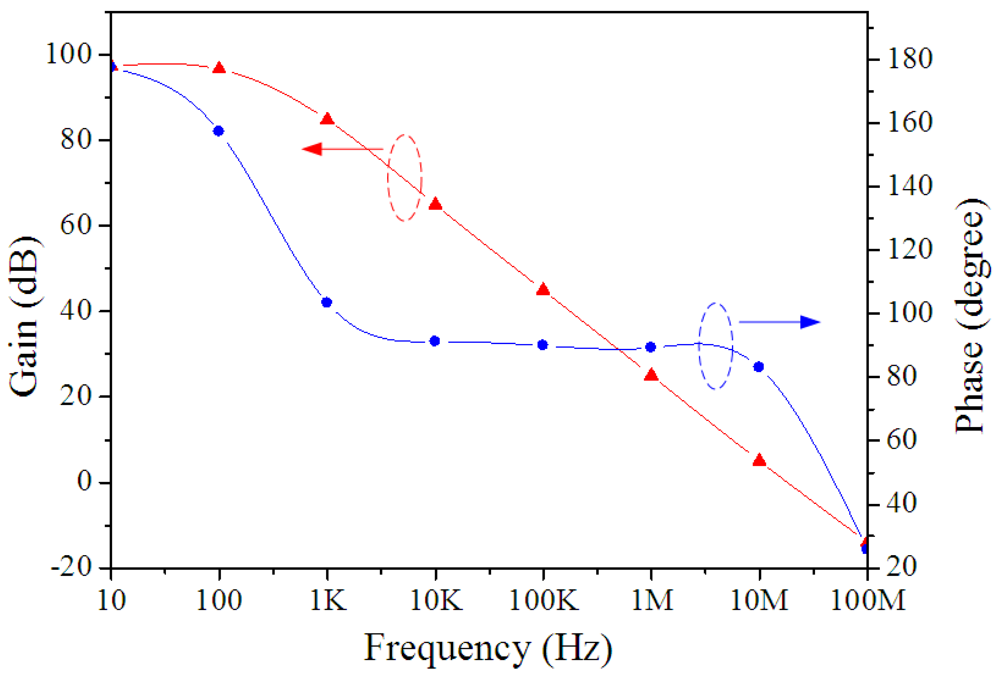
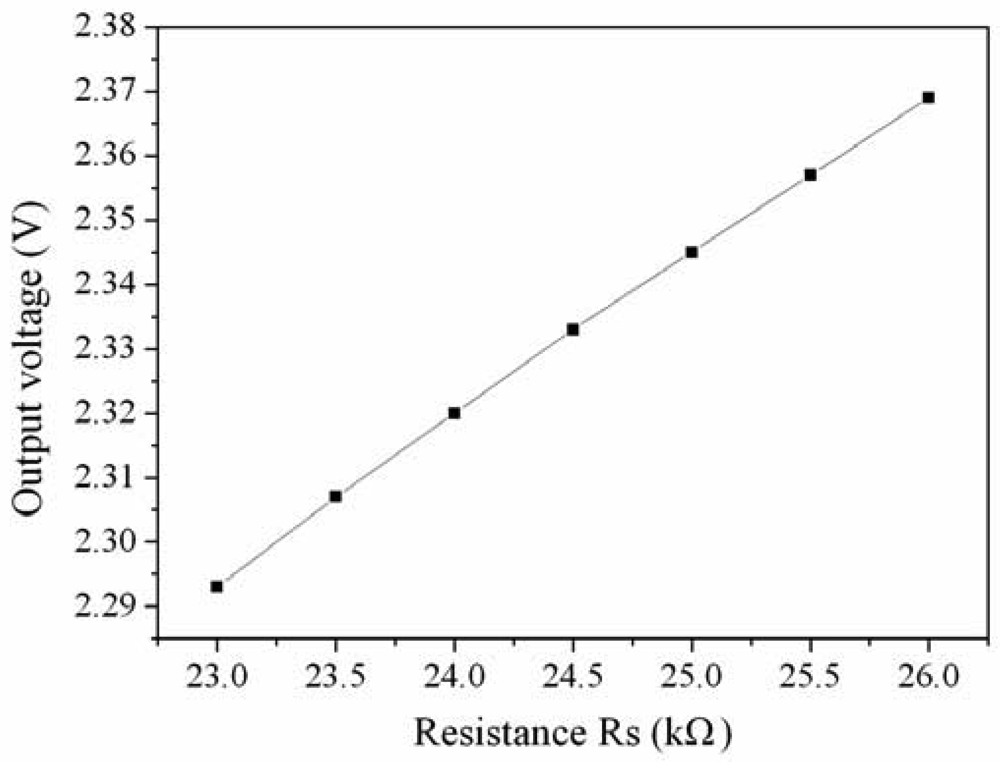
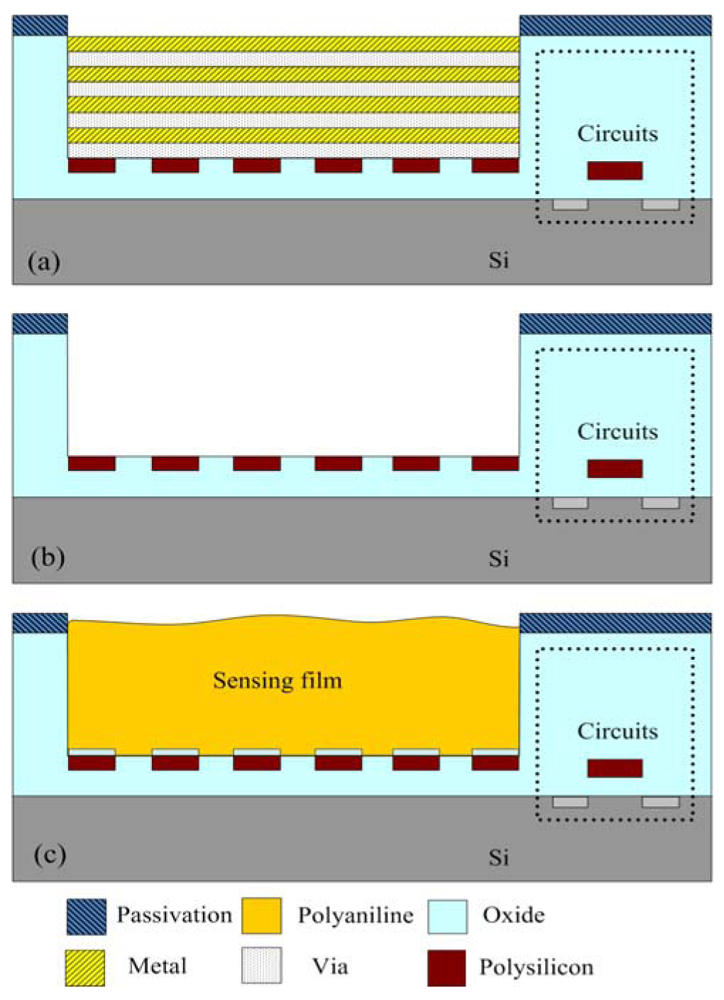

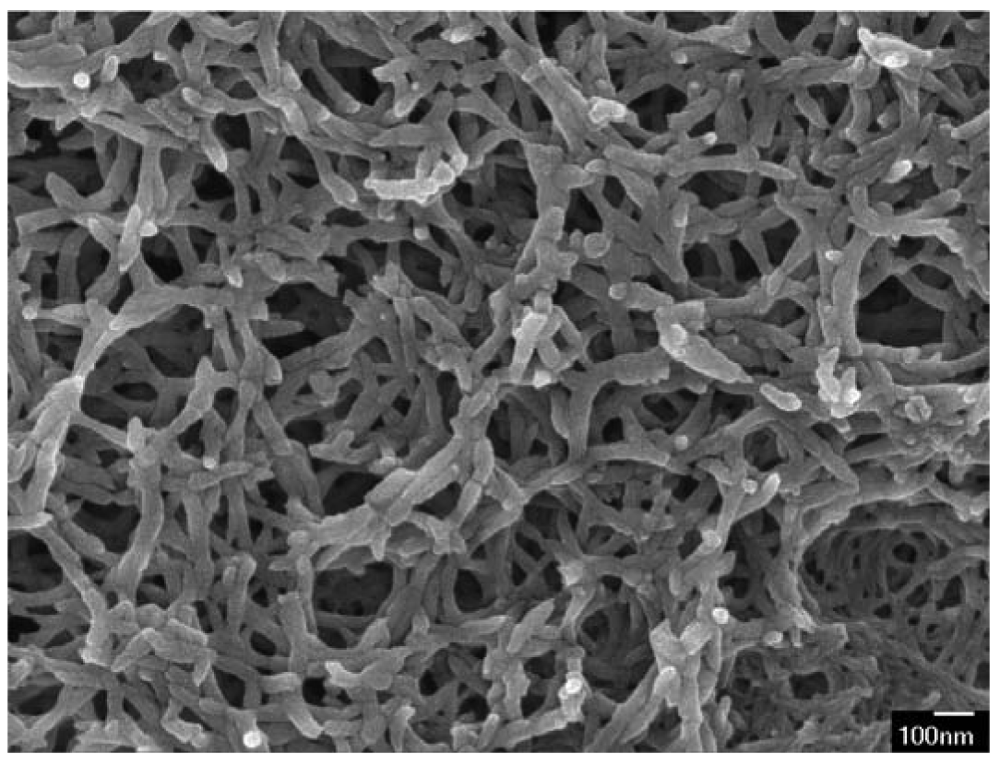

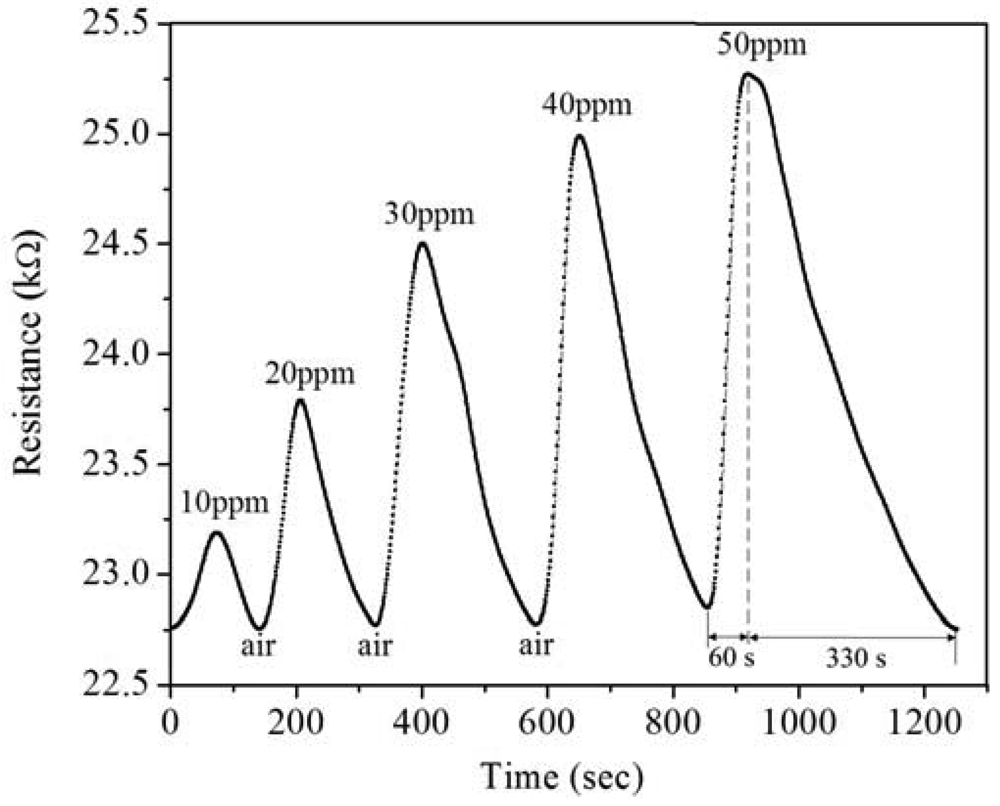

© 2009 by the authors; licensee Molecular Diversity Preservation International, Basel, Switzerland. This article is an open access article distributed under the terms and conditions of the Creative Commons Attribution license (http://creativecommons.org/licenses/by/3.0/).
Share and Cite
Liu, M.-C.; Dai, C.-L.; Chan, C.-H.; Wu, C.-C. Manufacture of a Polyaniline Nanofiber Ammonia Sensor Integrated with a Readout Circuit Using the CMOS-MEMS Technique. Sensors 2009, 9, 869-880. https://doi.org/10.3390/s90200869
Liu M-C, Dai C-L, Chan C-H, Wu C-C. Manufacture of a Polyaniline Nanofiber Ammonia Sensor Integrated with a Readout Circuit Using the CMOS-MEMS Technique. Sensors. 2009; 9(2):869-880. https://doi.org/10.3390/s90200869
Chicago/Turabian StyleLiu, Mao-Chen, Ching-Liang Dai, Chih-Hua Chan, and Chyan-Chyi Wu. 2009. "Manufacture of a Polyaniline Nanofiber Ammonia Sensor Integrated with a Readout Circuit Using the CMOS-MEMS Technique" Sensors 9, no. 2: 869-880. https://doi.org/10.3390/s90200869
APA StyleLiu, M.-C., Dai, C.-L., Chan, C.-H., & Wu, C.-C. (2009). Manufacture of a Polyaniline Nanofiber Ammonia Sensor Integrated with a Readout Circuit Using the CMOS-MEMS Technique. Sensors, 9(2), 869-880. https://doi.org/10.3390/s90200869



